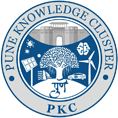Water underpins all life processes and activities. India supports 17% of the world’s human population on only 2.5% of the world’s land area through only 4% of the world’s fresh water resources. Therefore, it is imperative that we use water wisely.
Summary
We are mobilizing stakeholders to help us draft a participatory Sustainable Water Action Plan that converges human as well as financial resources from differentiated businesses-as-usual scenarios towards conscious decision-making and implementing necessary actions for protecting the health of ecosystems.
Vision
By 2035, the fresh water resources will double while meeting all environmental parameters.
Description
For the purpose of piloting SWAP, a geographical area of 6,736 sq.km defined using river basin approach (geomorphological features) of major rivers namely Mutha, Mula, Pavna, Indrayani and Bhima, their rivulets and streams and the numerous major dams and water bodies have been identified as the Pune Metropolitan Region (PMR). About 90% of PMR overlaps with the administrative boundaries under the ambit of Pune Metropolitan Region Development Authority (PMRDA). The area considered here comprises Pune Municipal Corporation, Pimpri Chinchwad Municipal Corporation, PMRDA, Zilla Parishad, municipal councils, cantonments, towns and rural areas.
Impact
- Pilot the preparation of participatory SWAP from local level (village or block level), micro-watershed, city and regional levels.
- Provide a time series situation analysis of water (availability, use, discharge, land-use, weather, climate change impacts, disaster risks), economic activities, policies and actions of various stakeholders within PMR.
- Highlight problems and solutions along with possible technological interventions.
- Converge the policies, schemes, programmes of the government at all levels and the resources (human, financial and natural) and actions taken by various stakeholders for sustainable management of water.
- Ensure health (human, environmental including biodiversity along with flow of ecosystem services) of rivers and wetlands.
- Establish water observatories for continuous monitoring and develop a decision response system for various stakeholders.
